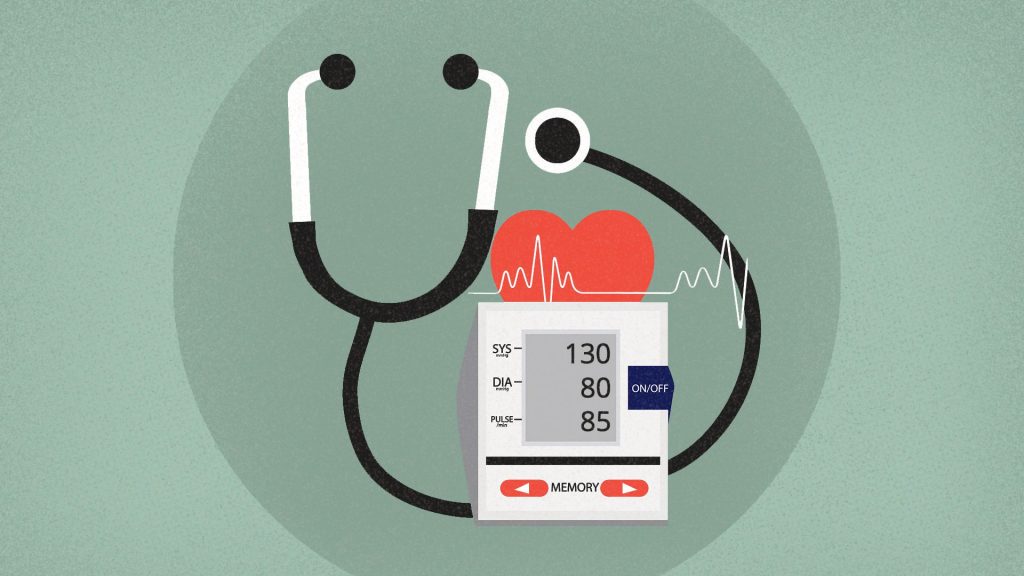
Tips for Controlling Hypertension
As more and more people suffer from hypertension, obesity and weight related problems, a lot more are

Secondary hypertension is a high blood pressure which is caused by another health or medical condition. This form of high blood pressure is different from other types of blood pressure like essential hypertension. Primary or essential hypertension has no clear identifiable cause and it is mainly thought to be linked to changes in genetic composition of the patients as well as lack of exercise and increased body mass.
Secondary high blood pressure may be caused by health conditions, which affect organs functions like kidneys, arteries, endocrine system and the cardiac or the heart. In addition, secondary high blood pressure can also occur in pregnant women. The treatment of secondary hypertension is aimed at managing both the underlying conditions and the increased blood pressure.
There are many conditions which are associated with secondary hypertension and these are such as diabetes, polycystic kidney problem and glomerular disease. Diabetic nephropathy can damage kidney’s filtering system and they result to elevated blood pressure. An inherited condition known as polycystic kidney disease can also raise blood pressure.
Cysts in your kidneys prevent them from functioning normally. The kidney filter system may be affected by glomerular disease. The kidneys filter waste and sodium through the micro-sized filters referred to as glomeruli and when they are infected, they suffer and become swollen. Since if these glomeruli are swollen, it means that they cannot work as usual and therefore a person is susceptible to high blood pressure.
Renovascular hypertension is a form of high blood pressure which is induced by narrowing of the arteries that supply blood to kidneys. This condition can lead to severe high blood pressure and irreversible damage of the kidneys. The renovascular condition is caused by fatty plaque that damages the coronary arteries, a condition known as atherosclerosis.
Another condition which is associated with secondary high blood pressure is Cushing’s syndrome. As a result of using corticosteroid medications, or due to pituitary tumor, the adrenal gland may synthesize more of the hormone cortisol. This leads to elevated blood pressure.
Other causes are pregnancy, medications and supplements as well as sleep apnea. Hyperparathyroidism is also another condition, which can lead to elevated blood pressure. The parathyroid glands are helpful in regulating phosphorous and calcium in the body. When there is too much synthesis of parathyroid hormone, this causes the amount of calcium to rise. This contributes to elevated hypertension.
Sponsored link
To find the average pressure reading, you may have to get pressure reading in several days. This is essential in order to be able to get approximate blood pressure that takes in account different days. If your pressure reading is something under 120/80 mmHg, then this considered normal blood pressure. If the average pressure reading settles at somewhere between 120/80 and 139/89, then the health practitioners consider this as prehypertension. Similarly, if the average pressure reading settles at above 140/90 then this is regarded as high blood pressure.
For many cases of high blood pressure even when the levels are dangerously high, there are usually no specific signs and symptoms. This is no exception for the secondary hypertension. However, patients suffering from secondary hypertension may experience headaches but this is not easy to associate it with high blood pressure.
There could be other health conditions, which are causing the headache. However, if you have been diagnosed with high blood pressure, and you encounter signs like resistance of blood pressure to medication, systolic blood pressure reading of more than 180 mmHg or sudden elevated blood pressure before the age of 30 or after you are 55, these signs may mean that you are suffering from secondary hypertension.
The treatment of secondary hypertension is aimed at managing both the underlying health conditions causing the disorder as well as bringing the pressure level down. There are medications and surgery procedures, which may be used. In most cases, when the underlying condition is treated, this may bring down the blood pressure or even push it to normal.
Lifestyle changes are advised such as eating healthy foods and increased physical activity while at the same time maintaining a low weight. The kind of medication administered will be determined by the underlying health condition, which is being treated as well as the severity of the high blood pressure.
Diuretics which are at times known as water pills are used to help the kidney get rid of excess sodium and water. These substances help reduce the volume of blood, which is associated with elevated blood pressure. Angiotensin II receptor blockers Help in relaxing blood vessels and this is attained by blocking the action but not the formation of angiotensin II natural chemical that narrows blood vessels. Calcium channel blockers are also used to help relax the muscles of the blood vessels and can also slow the heart rate.

As more and more people suffer from hypertension, obesity and weight related problems, a lot more are
Medical Referral | Accident Attorney Referrals
Filter out the noise and nurture your inbox with health and wellness advice that’s inclusive and rooted in medical expertise.
MedicalReferral.com does not provide medical advice, diagnosis, or treatment.